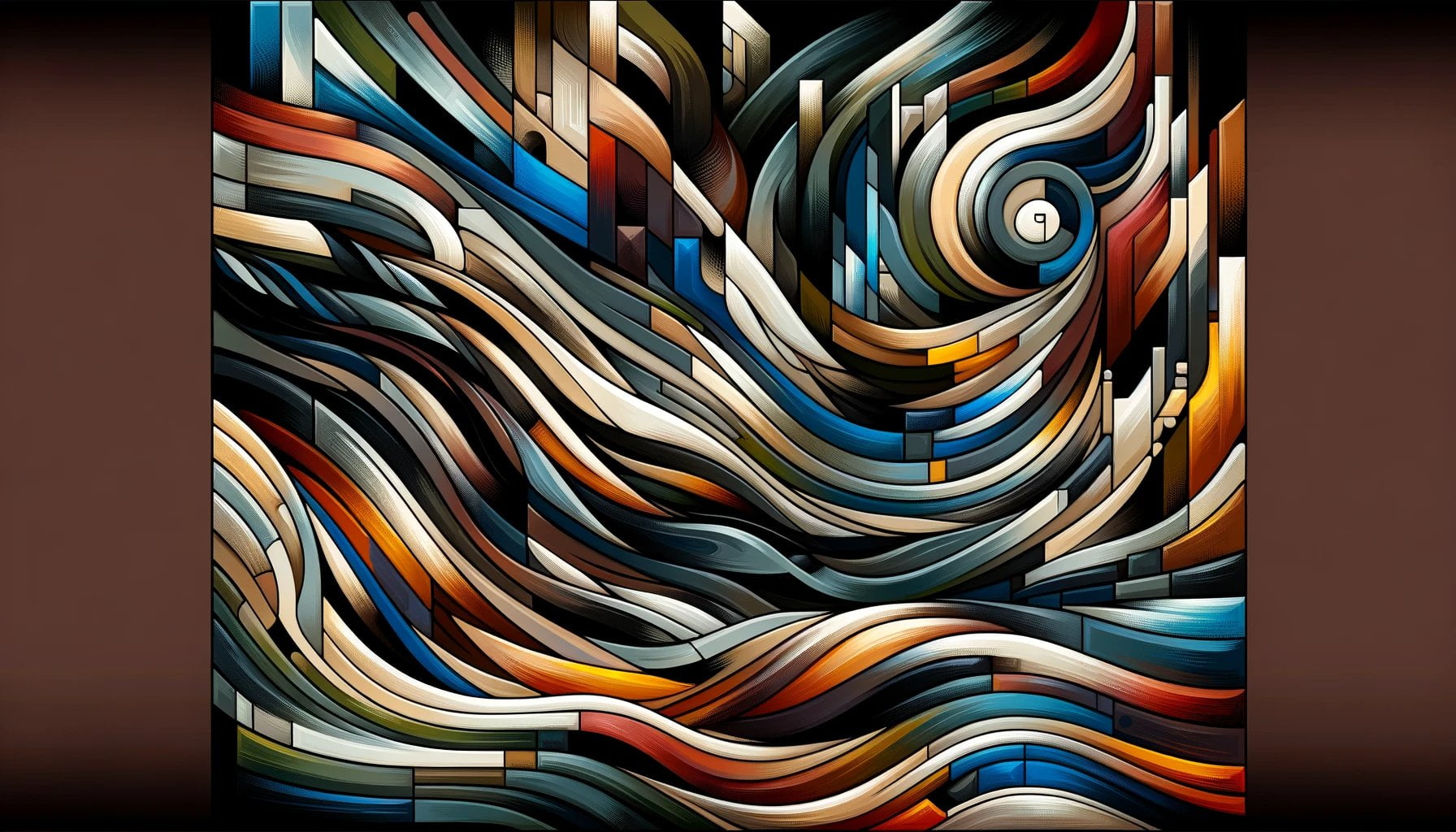Prepare to delve into the fascinating world of Jacob Lawrence, a renowned figure in American contemporary art. In this article, we will explore ten captivating facts about Lawrence that shed light on his life, artistic journey, and significant contributions to the art world. From his remarkable artistic technique to the inspiring narratives he depicted in his paintings, there is much to discover about this talented artist. So, fasten your seatbelts and get ready to embark on a journey filled with intriguing anecdotes and lesser-known aspects of Jacob Lawrence’s remarkable career.
Key Takeaways:
- Jacob Lawrence was an American painter who focused on African-American historical subjects and contemporary life.
- He developed a style called “dynamic cubism,” characterized by vibrant and colorful shapes.
- Lawrence served in the U.S. Coast Guard during World War II, becoming part of the first racially integrated sea crew.
- He was the first African-American artist to have his work showcased at the Museum of Modern Art in New York.
- Lawrence’s artwork often portrayed the experiences and hardships faced by African-Americans.
- He drew inspiration from the Harlem community and his own family’s experiences.
- In recognition of his contributions to the arts, Lawrence was awarded the U.S. National Medal of Arts in 1990.
- He also received the Washington Medal of Merit in 1998, further highlighting his impact and influence.
Fun Facts About Jacob Lawrence

Jacob Lawrence, the renowned American painter, left an indelible mark on the art world with his unique style and captivating depictions of African-American life and history. From his innovative approach to art to his groundbreaking achievements, Lawrence’s career is filled with fascinating facts that shed light on his extraordinary journey. Get ready to dive into the world of this American contemporary art icon as we uncover 10 fun facts about Jacob Lawrence.
1. A Pioneer in “Dynamic Cubism”
Lawrence was not only a talented artist but also a visionary. He developed a style known as “dynamic cubism,” which incorporated vibrant and bold shapes in his paintings. This distinctive approach brought energy and movement to his artworks, creating a sense of dynamism that set him apart from his contemporaries.
2. Joining the Racially Integrated U.S. Coast Guard
In 1943, during World War II, Lawrence enlisted in the U.S. Coast Guard. He became part of the first racially integrated sea crew, challenging racial barriers and paving the way for greater racial equality within the military.
3. Trailblazing in the Museum of Modern Art
As an African-American artist during a time of racial discrimination, Lawrence faced many obstacles. However, his talent and determination broke through these barriers. In 1944, he became the first African-American artist to have his work displayed in the prestigious Museum of Modern Art in New York City, a groundbreaking achievement that opened doors for future generations.
4. The Voice of African-American Experiences
A central theme in Lawrence’s work was the depiction of African-American life and struggles. He explored the daily experiences of African-Americans, giving voice to their stories through his art. Lawrence’s powerful and vivid portrayals shed light on important social issues and contributed to the cultural dialogue surrounding race in America.
5. The Harlem Influence
Lawrence drew much inspiration from the vibrant and culturally rich community of Harlem, where he spent a significant portion of his life. His artworks showcased the community’s spirit, capturing the essence of Harlem’s music, dance, and everyday life through his distinct visual language.
6. A Family Connection
Lawrence’s family history played a significant role in shaping his artistic vision. His mother was a domestic worker, and his father worked in vaudeville. These experiences, combined with stories passed down from previous generations, deeply influenced Lawrence’s understanding of African-American heritage, which he skillfully translated into his artwork.
7. Recognized for His Talent
In 1990, Lawrence received the prestigious U.S. National Medal of Arts, cementing his status as a celebrated artist. This esteemed honor recognized his exceptional contributions to the world of art and his significant impact on American culture as a whole.
8. Celebrating His Legacy in Washington
Lawrence’s remarkable achievements did not go unnoticed in his home state. In 1998, he was awarded the Washington Medal of Merit, a recognition of his lasting artistic legacy and his profound influence on the art community, both nationally and internationally.
Conclusion
Jacob Lawrence’s life and career were filled with remarkable milestones and powerful artistic expressions. From his innovative style to his pioneering achievements as an African-American artist, Lawrence continues to captivate audiences with his thought-provoking and visually compelling artworks. Now armed with these 10 fun facts about Jacob Lawrence, you can gain a deeper appreciation for his contributions to American contemporary art and his enduring legacy.
Here are some fun and interesting facts about various famous individuals that you may not have known. Click on the links below to discover more!
- fun facts about Tyreek Hill Did you know that Tyreek Hill once ran a 40-yard dash in just 4.29 seconds?
- fun facts about Alice Walker Discover fascinating details about how Alice Walker became the first African-American woman to win the Pulitzer Prize for Fiction.
- Lin-Manuel Miranda fun facts Explore the incredible journey of Lin-Manuel Miranda, the mastermind behind the Broadway sensation Hamilton, with these intriguing fun facts.
- fun facts about Tina Turner Uncover surprising details about the iconic Tina Turner and her legendary career as one of the greatest female rock artists of all time.
- fun facts about Carrie Underwood Did you know that Carrie Underwood was the season four winner of American Idol and has since become a highly successful country music superstar?
- fun facts about Kim Kardashian Delve into the glamorous and sometimes controversial life of Kim Kardashian with these captivating fun facts.
- fun facts about Ice Cube Learn intriguing details about the multi-talented artist Ice Cube, who effortlessly transitioned from being a rapper to a successful actor and filmmaker.
- fun facts about Camila Cabello Explore the journey of Camila Cabello, from her humble beginnings on The X Factor to becoming a global pop sensation, with these fascinating fun facts.
- interesting facts about Bruce Lee Discover lesser-known facts about the legendary martial artist and actor Bruce Lee, whose impact on the world of martial arts continues to be felt today.
- interesting facts about Thutmose III Dive into the rich history of ancient Egypt and explore the life and achievements of the powerful Pharaoh Thutmose III with these intriguing facts.
- interesting facts about Adam Sandler Take a closer look at the versatile comedian and actor Adam Sandler, known for his hilarious characters and memorable films, with these interesting facts.
- interesting facts about Prince Henry the Navigator Uncover the remarkable contributions of Prince Henry the Navigator, a key figure in the Age of Discovery, and delve into his captivating story with these interesting facts.
The Artistic Technique That Defined Jacob Lawrence’s Style
Jacob Lawrence was an influential American painter known for his unique style and portrayal of African-American historical subjects and contemporary life. His artistic technique, which he referred to as “dynamic cubism,” played a crucial role in defining his signature style.
Lawrence drew inspiration from a variety of sources, including West African and Meso-American art. His style can be characterized as expressive and cubist, as he incorporated expressive ideas and used cubist forms in his paintings. This combination created a distinctive visual language that set Lawrence apart from his contemporaries.
One of the key aspects of Lawrence’s artistic technique was his narrative approach. He often painted series of artworks that told stories, capturing significant moments in African-American history or depicting everyday life in African-American communities. This narrative element added depth and meaning to Lawrence’s work, inviting viewers to engage with the stories behind the art.
Another notable aspect of Lawrence’s technique was his use of flat shapes and vibrant colors. He employed these elements to create a sense of pattern and rhythm in his artwork, emphasizing movement and energy. This unique visual aesthetic became a hallmark of Lawrence’s style, leaving a lasting impact on the art world.
Lawrence’s art not only reflected his personal experiences and cultural heritage but also drew inspiration from broader artistic movements such as the Harlem Renaissance and Abstract Expressionism. Through his work, he became a powerful influence for younger African American and African artists, leaving a lasting legacy in the art community.
In conclusion, Jacob Lawrence’s artistic technique, which he called “dynamic cubism,” defined his style and contributed to his significant contributions to American contemporary art. Through his expressive and cubist approach, narrative storytelling, and use of flat shapes and vibrant colors, Lawrence created a unique visual language that continues to captivate and inspire audiences today.
Key Takeaways:
- Jacob Lawrence developed a unique artistic technique known as “dynamic cubism.”
- His style was characterized by expressive and cubist elements, incorporating expressive ideas and cubist forms.
- Lawrence was a narrative painter, often telling stories through a series of paintings.
- His use of flat shapes and vibrant colors created a sense of pattern and rhythm in his artwork.
- Lawrence’s technique was influenced by the Harlem Renaissance and Abstract Expressionism movements and continues to inspire artists today.
Sources:
– The Art of Jacob Lawrence – TheArtStory
– Jacob Lawrence – Wikipedia
The Impact of Jacob Lawrence’s Work on American Art
Key Takeaways:
- Jacob Lawrence’s art focused on depicting African American history and contemporary life, making him one of the most significant African American artists of the 20th century.
- Through his serialized projects, such as “The Migration of the Negro” and “War Series,” Lawrence captured important narratives and struggles within African American communities.
- Lawrence’s artwork addressed themes of history and the African American experience, resonating with viewers and continuing to inspire artists today.
- His deliberate choices in subject matter and style, characterized by modernist and social realist elements, contributed to the uniqueness and impact of his work.
- Lawrence’s series of paintings, “Struggle . . . From the History of the American People,” was recently reunited after more than 50 years, highlighting his enduring influence on American art.
Jacob Lawrence’s remarkable contributions to American art have had a profound impact on the art world, influencing both artists and viewers alike. His art, which focused on African American history and contemporary life, gave voice to narratives and shed light on important social issues. Lawrence’s works continue to resonate today, addressing themes of history and the African American experience.
One of the key aspects of Lawrence’s art was his serialized projects. In series such as “The Migration of the Negro” and “War Series,” he captured important stories and struggles within African American communities. These projects allowed Lawrence to delve into specific themes and explore them in depth, creating a profound impact on viewers.
Lawrence’s deliberate choices in subject matter and style also contributed to the uniqueness and impact of his work. His paintings, considered modernist and social realist, showcased a deliberate use of flat shapes and vibrant colors to create a sense of pattern and rhythm. This distinctive style drew inspiration from West African and Meso-American art while also being influenced by the Harlem Renaissance and Abstract Expressionism movements.
Recently, Lawrence’s series of paintings titled “Struggle . . . From the History of the American People” was reunited after more than 50 years. This exhibition showcased Lawrence’s ability to convey historical narratives through his art and underlined his lasting influence on American art. By reuniting this series, viewers had the opportunity to experience the power of Lawrence’s storytelling firsthand.
In conclusion, Jacob Lawrence’s impact on American art is undeniable. His unique approach to depicting African American history and contemporary life, coupled with deliberate choices in subject matter and style, continue to inspire and shape the art world today. Lawrence’s legacy serves as a reminder of the power of art to give voice to marginalized communities and illuminate important social issues.
Sources:
– New course examines Jacob Lawrence’s impact on American art from UW Homepage
– Jacob Lawrence | Smithsonian American Art Museum from Smithsonian American Art Museum
Jacob Lawrence’s Lasting Legacy and Recognition
Jacob Lawrence, the celebrated African American artist, left a profound impact on American art history. His unique style and depictions of African-American life and history have solidified his place as an American contemporary art icon. Let’s explore some fascinating facts about Jacob Lawrence’s lasting legacy and the recognition he has received throughout his career.
The ‘Migration Series’: Telling the Story of African American Migration
One of Jacob Lawrence’s most significant contributions to American art is his ‘Migration Series.’ This collection of paintings, created between 1940 and 1941, portrays the mass migration of African Americans from the rural South to the urban North in the early 20th century. Lawrence’s powerful images capture the hardships, hopes, and dreams of Black Americans during this period.
Inspired by a desire to shed light on the African American experience and honor the resilience of those who made the journey, Lawrence accompanied each painting in the ‘Migration Series’ with a caption, adding a narrative element that further enhances its impact.
Influences and Heroes: Shaping Lawrence’s Artistic Journey
Harlem, the vibrant neighborhood in New York City where Lawrence grew up, played a significant role in shaping his artistic vision. The energy, culture, and history of Harlem greatly influenced Lawrence, and his work reflected this connection.
Moreover, Lawrence’s art celebrated the heroes of Black History. Through his paintings, he highlighted the achievements and struggles of African Americans throughout history. Prominent artists and mentors like Augusta Savage and Charles Alston profoundly influenced Lawrence’s artistic development.
Legacy and Recognition: Jacob Lawrence’s Enduring Impact
Jacob Lawrence’s contributions to American art have been widely recognized and celebrated. His unique use of vibrant colors against Black and brown figures brought the African American experience to life, reshaping the art landscape.
Lawrence’s work continues to inspire and educate audiences today. His ‘Migration Series’ remains a powerful testament to the resilience and determination of African Americans.
In recognition of his talent and impact, Lawrence served as a professor of art at the University of Washington for 15 years, influencing countless students and leaving a lasting imprint on the art community.
Even after his passing on June 9, 2000, Lawrence’s legacy lives on. His work has been exhibited in prestigious galleries, museums, and institutions worldwide.
Key Takeaways:
- Jacob Lawrence’s ‘Migration Series’ is a significant body of work that depicts the mass migration of African Americans from the rural South to the urban North.
- Harlem, the neighborhood where Lawrence grew up, greatly influenced his artistic vision.
- Lawrence’s art celebrated the heroes of Black History, highlighting the achievements and struggles of African Americans.
- His unique use of vibrant colors against Black and brown figures reshaped the art landscape.
- Lawrence’s ‘Migration Series’ continues to inspire and educate audiences.
- He served as a professor of art at the University of Washington, leaving a lasting imprint on the art community.
- Lawrence’s work has been exhibited in prestigious galleries, museums, and institutions worldwide.
Sources:
1. Biography.com – Jacob Lawrence
2. Wikipedia – Jacob Lawrence

FAQ
Q1: What is Jacob Lawrence known for?
A1: Jacob Lawrence is known for his portrayal of African-American historical subjects and contemporary life through his artwork.
Q2: What is “dynamic cubism” and how did Jacob Lawrence use it in his art?
A2: “Dynamic cubism” is a category of art that Lawrence created, which uses bright and colorful shapes. He incorporated this style into his artwork, bringing an expressive and cubist element to his ideas.
Q3: Was Jacob Lawrence the first African-American artist to have his work displayed in the Museum of Modern Art in New York?
A3: Yes, Jacob Lawrence was indeed the first African-American artist to have his work displayed in the Museum of Modern Art in New York.
Q4: What are some themes that Jacob Lawrence’s art often portrayed?
A4: Jacob Lawrence’s art often portrayed themes such as migration, war, and mental illness, shedding light on important aspects of African-American life and history.
Q5: Where can we find Jacob Lawrence’s artwork today?
A5: Jacob Lawrence’s artwork can be found in various collections and museums, including the Smithsonian American Art Museum and the National Gallery of Art.
- Unveiling Bernhard Caesar Einstein’s Scientific Achievements: A Legacy in Engineering - July 15, 2025
- Uncover who is Jerry McSorley: CEO, Family Man, Business Success Story - July 15, 2025
- Discover Bernhard Caesar Einstein’s Scientific Contributions: Unveiling a Legacy Beyond Einstein - July 15, 2025















